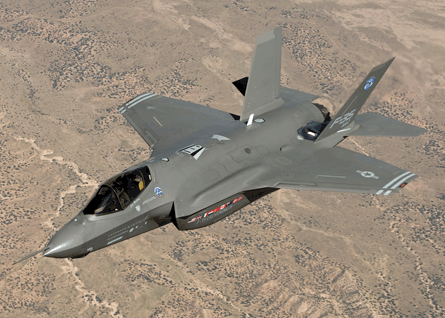Controversy will remain the buzzword in the defence sector during 2010, with long-running processes to select a new tanker for the US Air Force and a new-generation fighter for Brazil likely to grab early headlines.
Now entering its 10th year and third attempt, the USAF's process to acquire a replacement for its oldest Boeing KC-135R tankers should reach a new apex of intensity over the coming months.
Having won the previous KC-X battle through a flawed selection subsequently overturned by the US General Accountability Office, the Northrop Grumman/EADS North America team has threatened to withdraw from the new competition, as the air force is refusing to change the rules for evaluating its bid against Boeing. If either side is to soften its position it will have to move quickly, as a final version of the KC-X request for proposals is scheduled for release in mid-January.
Only once the final document has been released will the field for the requirement be confirmed, with any Northrop/EADS proposal of an Airbus A330-based design to face solutions based on either the Boeing 767 or 777. Separately, Airbus Military will during 2010 hand over its first KC-30 tanker/transport to launch customer the Royal Australian Air Force.
 |
|---|
© US Air ForceThe US Air Force's efforts to find a new tanker is entering its 10th year |
The three-way battle to win Brazil's FX-2 contest for the first 36 of a possible fleet of 130 new fighters could also be the subject of outcry early this year.
A choice between the Boeing F/A-18E/F Super Hornet, Dassault Rafale and Saab Gripen NG had been expected in late 2009, with the French aircraft having been widely expected to win. But with presidents Luis Ignacio Lula da Silva and Nicolas Sarkozy having surprised Dassault's rivals by announcing the Rafale's selection last September - before the air force had even delivered the results from its evaluation of the bidders - a victory for Paris appears guaranteed to prompt an appeal into the factors behind the selection process.
JSF ANSWERS
Elsewhere in the fighter arena, Lockheed Martin must this year deliver answers for the F-35 Joint Strike Fighter programme. Following a glitch-prone 2009, the company will have to accelerate its flight-test activities by historic levels to get the schedule back on track.
Meanwhile, Lockheed will seek to expand its international presence by signing its first major export orders for the JSF, with Israel the leading candidate for an expected 25 aircraft. Partner nation Australia should also advance its planned first order for 14 of the type, having approved the purchase plan in December.
Any new major slip for the F-35 could have implications for Boeing's F/A-18E/F, which stands to benefit directly from delays to the US Navy's F-35C carrier variant. The manufacturer must find a new customer for the Super Hornet this year to keep the multirole fighter in production beyond 2011.
Europe's prospects in securing future export sales of the Eurofighter Typhoon should also become clearer over the next few months, after partner nations Germany, Italy, Spain and the UK have reached a decision on whether to equip the type with new technologies.
Potentially, the biggest decision facing their Tranche 3A configuration choice hinges on whether to introduce an active electronically scanned array radar. The new class of sensor could be an important element of future bids to sell the Typhoon to nations that are hungry for the transfer of cutting-edge technology.
 |
|---|
© Lockheed Martin |
One such nation is India, which is continuing its process to evaluate six fighter designs: the Gripen NG, Rafale, Super Hornet, Typhoon, Lockheed F-16 and Russia's RSK MiG-35.
New Delhi's requirement for 126 new medium multirole combat aircraft could deliver a product-saving opportunity for several of the bidders, but the pace of its selection process is likely to be a source of frustration. For example, it is unclear whether India will narrow the competitive field for MMRCA once the current evaluation process has been completed.
India will also have an eye on the promised first flight of Russia's Sukhoi-led PAK-FA fifth-generation fighter this year, with the type's debut having slipped from late 2009. Once revealed, the aircraft could take on the sales baton from types such as the MiG-29 and Su-27/30, or seal the continued contraction of the former-Soviet fighter industry.
Washington, meanwhile, will be watching events that could lay the ground work for technologies that may become mature by the end of the next decade. First flight events for the Northrop X-47B and Boeing X-51A WaveRider will demonstrate carrier-based unmanned strike aircraft and a hypersonic cruise missile, respectively, while a slightly delayed intercept test for the Boeing YAL-1 Airborne Laser could prove to be a watershed event for the directed energy community.
But for the US Army aviation community, continued belt-tightening seems inevitable. Pressure is likely to grow on the budget for development programmes such as the Sikorsky UH-60M Black Hawk and Boeing AH-64D Apache Block III. New programmes, such as a replacement for its armed scout helicopters, will be difficult to support.
In the airlift sector, new opportunities are likely to emerge, with major products on both sides of the Atlantic boosted recently. Boeing's C-17 strategic transport has been handed a further stay of execution, with 10 more examples to roll off the Long Beach line in California by mid-2012, thanks to the latest Congressional action to save the programme.
In Europe, the recent first flight of the troubled Airbus A400M could be a pointer to a good year for the turboprop-powered design; so long as the company can agree new contractual terms with its seven launch customers.
Coverage of US programmes provided by Stephen Trimble in Washington DC
Source: Flight International
















